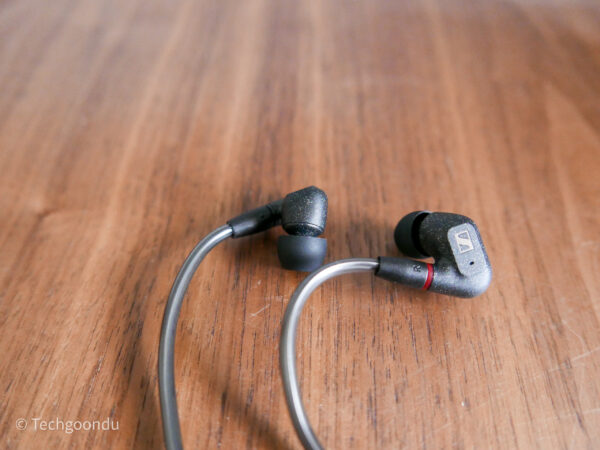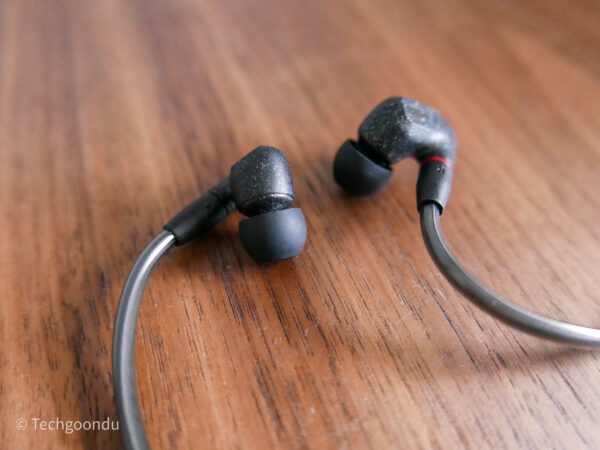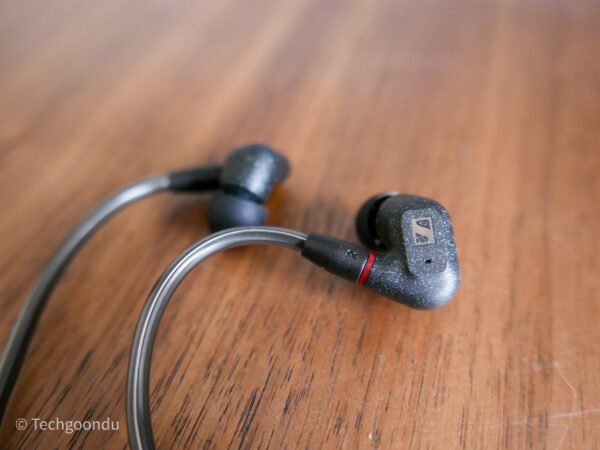
At a time when fully wireless ear buds are the rage, it takes a brave company to release a costly wired version that requires a headphone jack. That’s what Sennheiser has done with its new IE 300.
The wired in-ear monitors (IEMs) are unapologetically aimed at the audiophile, who doesn’t mind lugging around a digital audio player just to play music, though at a higher quality than your average phone.
You can still plug the IE 300s into your phone’s USB port but you’ll probably need an adapter – and a good one. Most high-end phones like Samsung’s Galaxy range or Apple’s iPod don’t have a headphone jack any more, instead relying on a wireless link.
For my tests in the past few weeks, I bought a Samsung adapter for my Galaxy S20+ phone, which worked fine for tracks streamed over the Tidal lossless streaming service.
This piece of gear is important because it does the critical job of converting digital signals into analogue ones for your earphones to transmit to your ears.
Unlike with true wireless earphones, which carry all this electronic gear inside the ear buds themselves, the IE 300 are traditional earphones that only do the audio part, none of the decoding or conversion.
Immediately, you feel the lightness of the 4-gram earphones, which are significantly less taxing on you ears. Flexible ear hooks are a hit and miss for the most part, but on the IE 300, these adapt easily to your ear shape and size.
These earphones are among the most comfortable I’ve put on. It also helps to have ear buds that come with memory foam, so they fit snugly yet don’t press too hard against your ears.
They also do well to keep ambient noise out, without the electronic noise cancelling that is found in many newer fully wireless ear buds, like Sennheiser’s own Momentum True Wireless 2 last year.

Of course, the biggest reason why you’d be looking at the IE 300 is audio quality. Here, Sennheiser doesn’t disappoint, especially with its well-tested 7mm transducer that is similar to what you find in the excellent and more expensive IE 800 S.
The IE 300 earphones are capable of extracting a good amount of detail that you’d find missing on most other rivals of the same size. Listen out for the plucking of guitar strings or the subtle drawing of breath by a vocalist in tracks, for example.
What I’m also impressed by is the balance and separation. Diana Krall’s Live in Paris concert album, for example, gives you a sense of the various instruments as well as vocals coming together in a harmonious performance. Each audio source is distinct yet a coherent part of a whole.
The highs are terrific – okay, after I tweaked my phone’s equaliser functions – so that some unique instruments, such as a triangle, sparkle and come through clearly.
The bass extension is also impressive. Listen to the double bass on some jazz tracks, again from Diana Krall’s album, and you get a sense of the colourful backdrop to many of the tracks.
I love the midrange as well, from full-throated rock vocalists to quieter jazz pieces, such as Canadian jazz vocalist Chantal Chamberland’s version of Believe. There is a clarity and precision you’d miss out on with a lesser pair of earphones.
A lot of this is down to the level of control on these Sennheisers. They are designed with a so-called “room within a room” structure, so that the air moving in and out is managed with precision.
Fire up a “noisier” track like one from the Tenet movie soundtrack, and you’d find the IE 300 keeping pace and keeping control of the punchier bass and multiple audio sources all happening at once.
There isn’t the dreaded congestion that you’d often find in such small earphones, either. The scale of the Tenet movie, complete with an airplane slamming into a hanger, isn’t hard to visualise.
One important test of speakers and earphones is how they transition from a loud part of an audio track to a quiet or silent one. Here again, the IE 300 exhibit a good amount of dynamism.
From the huge sounding horns to a sudden silence in Tenet’s tracks, the transition in milliseconds doesn’t seem laggy or laboured. Instead, you get the zip and attack you need, which are a joy to find on such small earphones.

What I’m getting, I’m sure, isn’t even the most impressive performance from the earphones. After all, I’m only using my limited Samsung adapter to connect to them.
If I were to connect the IE 300 to a dedicated audio player, which I did at its Singapore launch a few weeks ago, the sound quality will be even better.
I guess that’s the biggest drawback for the IE 300. These are such excellent earphones for their audio quality but they demand that you have the gear to get the most out of them.
I’d advise getting a portable digital-to-analogue converter (DAC) cum amplifier to plug the earphones into. Of course, that’s hardly as convenient as simply connecting wirelessly to your phone.
There’s also the cost. For S$449, the IE 300 earphones are more expensive than the average true wireless earphones, which cost around S$200 to S$300.
However, if you value great audio quality, the IE 300s are actually a good deal, considering the more expensive IE 800 S are going for S$799 now even with a massive discount (usual price S$1,590).
I guess if you already have a pair of true wireless earphones for commuting or jogging, then the IE 300s could be your deskbound pair for more high quality listening. You’d need to spend for that privilege, of course.
One forgotten benefit of the IE 300s is that they don’t suffer from a dead battery, unlike a pair of wireless earphones. When it is possible to fly again, I’d like to have a pair of these wired earphones accompanying me on a long journey.






